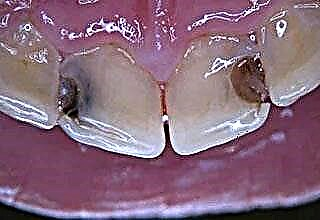Thrombosis of the heart chambers is a widespread pathology caused by disorders in the complex of systems and reactions. Most often, the occurrence is based on cardiac diseases, and the main role in the formation of a thrombus is played by pathological activation of plasma coagulation factors. The morphological substrate of pathology is the formation of blood clots in the heart cavity. This process threatens not only with the emergence of serious complications, but also the possibility of death.
What is a blood clot and how is it formed?
To start the process of thrombus formation, several conditions are necessary:
- damaged vessel wall;
- decreased blood flow rate;
- disorders of the rheological properties of blood.
These factors are the trigger for a number of biochemical reactions involved in blood clot formation.
There are three main stages of the process:
- The release of thromboplastin enzyme from destroyed platelets.
- Thromboplastin using Ca ions2+ accelerates the conversion of inactive plasma protein prothrombin to thrombin.
- Under the influence of thrombin, insoluble fibrin is formed from fibrinogen. From the threads of the latter, a mesh is formed in which blood cells are retained. The resulting structure tightly closes the damaged area, stopping the bleeding. Normally, this process takes 5-10 minutes.
After the healing of the affected area, the resorption of the formed thrombus is provided by the fibrinolysis system. The imbalance between the interaction of these two systems determines the risk of the occurrence and development of thrombosis.
Why does a clot form?
Normally, thrombus formation is a physiological process that does not lead to the development of pathologies. And only under the influence of some factors, the formed clots do not dissolve, but attach to the vessels, blocking their lumen and disrupting the blood flow.
Risk factors include the following diseases of the cardiovascular system:
- aneurysm of the heart;
- atrial fibrillation;
- myocardial infarction;
- cardiac ischemia;
- congenital and acquired valve defects;
- dilated cardiomyopathy;
- chronic heart failure (CHF).
The risk of developing thrombosis increases significantly if the patient has several of the above diseases.
The resulting thrombus in the heart is classified into right- or left-sided, atrial and ventricular (parietal). A special type of clot (globular) occurs with mitral stenosis.
Complications and their consequences
The most dangerous complication of heart thrombosis is the separation of the floating part and blockage of blood vessels. When a blood clot is located in the veins of the systemic circulation, the right atrium or ventricle, pulmonary embolism is most dangerous. The severity of the condition depends on the size of the occluded vessel.
With obturation of large - pulmonary infarction occurs. In this case, patients may feel chest pain, respiratory failure, fever and severe weakness. A drop in blood pressure and an increase in heart rate are possible. The prognosis is poor - in most cases, instant death occurs.
Blood clots enter the systemic circulation from the left sections, from where they can move in two directions - up and down. If a blood clot breaks off in the heart and moves upward, it eventually enters the cerebral vessels (CM). As a result, symptoms of ischemic stroke develop.
Thromboembolism of the arteries of the lower extremities, damage to the renal and mesenteric vessels occurs when the blood clot moves down. The most difficult is thrombosis of the mesenteric arteries - a clinic of peritonitis develops, followed by necrosis of the mesentery. Obturation in the lower extremities has a more favorable outcome due to the developed collateral blood flow in them.
The separation of a blood clot from the left half of the heart can lead to the following consequences:
- thrombosis of the arteries of the GM with the clinic of ischemic stroke;
- obstruction of the jugular vein, which is characterized by severe headache, dizziness, palpitations and visual disturbances;
- clinic of acute myocardial infarction (MI) when an embolus enters the coronary arteries;
- thrombosis of the renal arteries is accompanied by severe pain in the lumbar region, impaired urination;
- blockage of mesenteric vessels is manifested by peritonitis followed by intestinal necrosis;
- the presence of a blood clot in the arteries of the extremities is accompanied by pallor and blue discoloration of the skin, the disappearance of pulsation in them, in the absence of timely assistance, gangrene may form.
Each of these complications requires a specially selected therapy, the main goal of which is to remove the detached clot and avoid the appearance of new ones. In addition, it is important to remember that detachment of a blood clot, regardless of its primary location, is the most common cause of heart attacks.
Prevention of intracardiac thrombosis
Prevention of the onset and progression of this disease consists in proper nutrition, regular physical activity and maintaining normal blood viscosity. Also an important place in preventing the development of thrombosis is the timely and adequate treatment of the diseases that contribute to it.
There are special scales by which you can classify the degree of risk of developing venous or arterial thromboembolism. The latter include:
the patient's age is over 65;
- the presence of malignant neoplasms;
- increased blood clotting;
- pregnancy;
- prolonged bed rest after injury;
- obesity;
- taking hormonal drugs (oral contraceptives, steroid therapy for rheumatological pathologies);
- large abdominal operations;
- the presence of concomitant vascular pathologies (atherosclerosis, thrombophlebitis, varicose veins).
In addition, the general condition of the patient is assessed, the presence of signs of heart failure (total or for an individual ventricle) and symptoms from other organs and systems.
Difficulties in diagnosing intracardiac thrombosis arise due to the fact that immobile blood clots do not manifest themselves in any way, which only enhances the characteristic signs of the underlying disease.
Patient diagnosis and treatment
After identifying a patient from a high-risk group, it is necessary to conduct a complex of studies. The standard electrocardiography (ECG) procedure is not informative in this case. Laboratory markers of increased blood clotting and inhibition of fibrinolysis are not specific, since they are characteristic of many diseases of the cardiovascular system.
To verify the diagnosis, you will need:
Doppler ultrasound - displays the speed and direction of blood flow in the heart;
- scintigraphy - determines the localization of disorders in the coronary vessels and the degree of blood supply to the myocardium;
- MRI - displays the state of cardiac tissues;
- heart x-ray - allows you to diagnose aneurysm, myocardial hypertrophy, dilated cardiomyopathy, as well as the presence of thrombotic plaques;
- roentgenokymogram - allows you to diagnose the site of localization of the thrombus.
The diagnosis of thrombosis requires initiation of treatment. Drugs of choice for long-term drug therapy:
- antiplatelet agents that reduce the degree of platelet aggregation and adhesion.These include Acetylsalicylic acid, Dipyridamole, Clopidogrel;
- anticoagulants, the mechanism of action of which is aimed at inhibiting the activation of blood coagulation factors. The most commonly used are Dabigatran, Rivaroxaban, Heparin.
Patients with pulmonary embolism, myocardial infarction and ischemic stroke are shown thrombolytic therapy (Alteplase, Urokinase, Tenectoplaza), then antiplatelet and anticoagulant agents are added.
The thrombolysis procedure is contraindicated in the presence of aortic aneurysm, intestinal bleeding, strokes, and a history of severe cranial trauma. Retinal diseases, pregnancy and lactation, high or low blood pressure are relative contraindications.
In addition to side effects, thrombolytic therapy can be accompanied by the following complications:
- reperfusion arrhythmias;
- the phenomenon of "stunned myocardium";
- re-occlusion;
- bleeding;
- arterial hypotension;
- allergic reactions.
Thrombolytic therapy is recommended to be discontinued if its use poses a greater threat to the patient's life than the disease itself.
Surgical removal of intracardiac clots is possible only in specialized departments. The essence of the operation lies in the extraction of thrombotic masses using an endoscope held in the cardiac cavity.
Coronary artery bypass grafting and stenting under X-ray control will also be effective in the case of coronary artery thrombosis (real-time photos are constantly displayed on the screen). The essence of the first operation lies in bypassing the affected area with the help of vascular prostheses, and the second - in the establishment of a special frame in the lumen of the vessel for its expansion.
It is important to remember that surgery does not eliminate the pathological process itself, but is carried out to restore blood flow or to avoid possible complications in the event of a clot rupture.
The choice of the method of treatment and recommendations for rehabilitation are individual in each specific situation. It is necessary to take into account all possible risks and contraindications to obtain the most positive result.
Conclusions
Today, the prevention and treatment of thrombosis of the heart cavity is an advanced area of cardiology. The process of thrombus formation itself has two sides: on the one hand, the protection of the body from large blood loss, on the other, the occurrence of serious diseases with the risk of death. Therefore, it is necessary to know what diseases lead to the pathological formation of blood clots, the symptoms and possible complications of heart thrombosis, in order to have time to get medical help on time and a chance for a full recovery.



